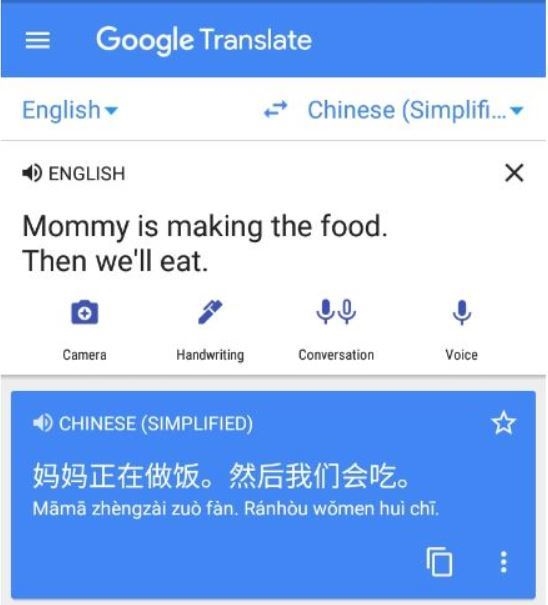This is a good time to tell you about how we used Google Translate with our now-6-year-old son because just last week we celebrated the 2-year anniversary of when we went to China to adopt him. He had just turned 4 then.
Before we left for China, I wondered how we’re going to manage to communicate with a little boy who speaks his own language but doesn’t yet know how to read it. And we didn’t know any Chinese. We had a Chinese guide with us on the trip, so I asked him about maybe using Google Translate. He said yes, that could work; he had a similar tool that he used from time to time. He told us the right version of Chinese to use with it and also gave us advice on how to use it. The main thing was to use as simple and short sentences as possible.
We tried it out, typing out our Finnish sentences and then having the app “speak” in Chinese. We considered using spoken Finnish input too, but thought that there might be a bigger chance of mistakes then so we stuck to typing. We did say the sentences out loud in Finnish as we typed so that our son would start to connect what we were saying with what was happening.
Our son is a very responsive child and quickly figured out that the Chinese coming from the phone was telling him something helpful. He would nod and then do what the app told him to do. Or he might answer back ‘No!’ if he didn’t want to do what it was telling him to do (that was a Chinese word we learned quickly). Either way, we knew he understood.
We used this system mostly for things that we couldn’t communicate through hand signals. Things like what is happening and what we’re going to do next: “Mommy is making the food. Then we’ll eat.” Why we’re all getting our clothes on: “Now we’re going outside.” That was important, we didn’t want him to feel confused.

I’d say during the first month we used it 10 times a day. I pretty much had my phone near me at all times, ready to go whenever my son showed signs of being confused or wondering about what’s going on. Every once in a while the app clearly got my sentence wrong so I had to try again, but at least half the time it worked fine on the first try.
How did it affect his learning of Finnish? It’s kind of hard to say because I don’t know what it might have been like without us using Google Translate. But I think it most likely made learning Finnish easier. It was just astounding how quickly he picked it up! Though kids at that age, they tend to learn very quickly.
We didn’t end up using this system very long. We met our son in January and I clearly remember that by March he started to use the Finnish words he knew. We had had an interpreter along for things like doctor visits, and in March he also stopped replying to her in Chinese. I guess he might have thought that Finnish belongs to his new life and positive experiences, so he just made a conscious decision to stop using Chinese.
I recently asked him if he remembers using the translation app at the beginning. He remembered that it was a woman’s voice (true) and that he understood her every time she spoke (not so sure on that one, he tends to be a bit of an optimist).
Even though we only used machine translation for that short time, it was a very effective time. It helped us to explain things and what was going on. It was a big help.
I love this story! Makes me a little weepy to be honest. What magic.
Keep calm and carry yarn.
>
LikeLike
What a lovely story! Thank you, Mary, for sharing this.
LikeLike